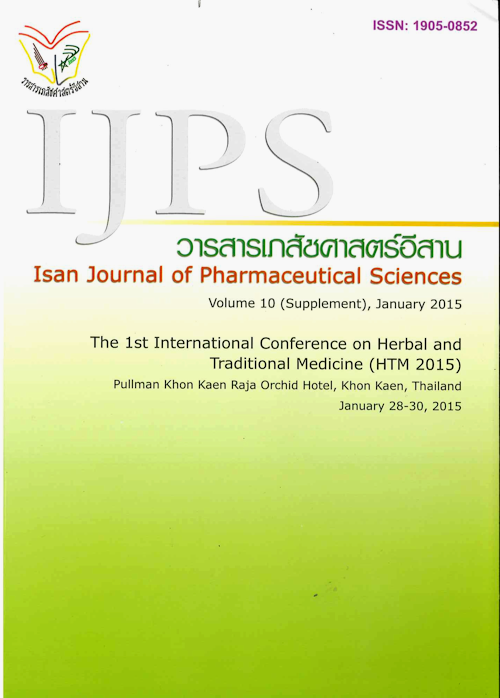Pharmacokinetics of Natural Products: The Missing Puzzle Piece in the Effi cacy of Phytotherapeutics?
Main Article Content
Abstract
concentration of active constituents can reach the target sites of action in the body. This interpretation can be misleading since the pharmacokinetic properties of a compound are completely ignored. Although important, there is still limited information available regarding herbal pharmacokinetics. This might be due to the following reasons: (i) the active constituents are not known; (ii) the study of herbal pharmacokinetics is extraordinarily complex because extracts are multicomponent mixtures which
contain several chemical constituents. Therefore concentrations of single compounds in the fi nal product are in the lower mg range per dose. (iii) The resulting plasma concentrations are often in the μg to pg per liter range. As a consequence analytical methods determining bioavailability and pharmacokinetics of natural compounds have to be suffi ciently sensitive. Advanced techniques such as GC-MS/MS or HPLC-MS/MS can be used nowadays to accomplish these goals. A better understanding of the pharmacokinetics and bioavailability of natural compounds can help in designing rational dosage regimen; and it can further help to link data from pharmacological assays with clinical effects. In this presentation, pharmacokinetic studies will be discussed that have been conducted for some of the top-selling botanicals worldwide, including artichoke, mangosteen and valerian.
Article Details
In the case that some parts are used by others The author must Confirm that obtaining permission to use some of the original authors. And must attach evidence That the permission has been included
References
Ames, R., Brown, J. and Wang, Y. 2000. Dichloromethane in drinking water. Office of Environmental Health Hazard Assess-ment.
Chairungsrilerd, N., Takeuchi, K., Ohizumi, Y., Nozoe, S. and Ohta, T. 1996. Mangosta-nol, a prenyl xanthone from Garcinia mangostana. Phytochemistry. 43: 1099-1102.
Chemat F., Vian, M.A. and Cravotto, G. 2012. Green extraction of natural products: Concept and principles. International Journal of Molecular Sciences. 13: 8615-8627.
Chomnawang, M.T., Sakagami, S.S., Nukoolkarn, V.S. and Gritsanapan, W. 2005. Antimicrobial effects of Thai medicinal plants against acne-inducing bacteria. Journal of Ethnopharmacology. 101: 330-333.
Gutierrez-Orozco, F. and Failla, M.L. 2013. Bio-logical activities and bioavailability of mangosteen xanthones: a critical review of the current evidence. Nutrients. 5: 3163-3183.
Ibrahim, M.Y., Mariod, A.A., Mohan, S., Hashim, N.M., Abdulla, M.A., Abdelwahab, S.I., Arbab, I.A. and Ali, L.Z. 2014. α-Mangostin from Garcinia mangostanaLinn: an updated review of its pharma-cological properties. Arabian Journal of Chemistry. 1-39.
Nganlasom, J., Suttitum, T., Jirakulsomchok, D. and Puapairoj, A. 2008. Effects of Centella asiatica Linn. leaves and Garcinia mangostana Linn. hull on the healing of dermal wounds in diabetic rats. Srinagarind Medical Journal. 23: 402-407.
Nualkaew, N., Morita, H., Shimokawa, Y., Kinjo, K., Kushiro, T., De-Eknamkul, W., Ebi-zuka, Y. and Abe, I. 2012. Benzophenone synthase from Garcinia mangos-tana L. pericarps. Phytochemistry. 77: 60-69.
Pothitirat, W., Chomnawang, M.T. and Gritsana-pan, W. 2009. Anti-acne inducing bacteria activity and α-mangostin content of Garcinia mangostana fruit rind extracts from different provenience. Songklanakarin Journal of Science and Technology. 31: 41-47.
Pothitirat, W., Chomnawang, M.T., Supabphol, R. and Gritsanapan, W. 2010. Free radical scavenging and anti-acne activities of mangosteen fruit rind extracts prepared by different extraction methods. Pharmaceutical Biology. 48: 182-186.


